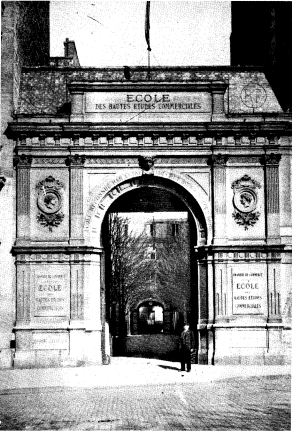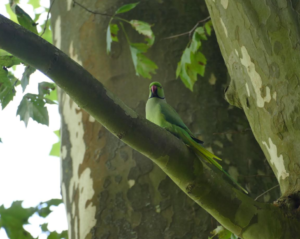Every diligent MBA candidate can recite from memory the deadline dates and average GMAT scores of their preferred school, but only a few go in depth and really learn about the institution’s past.
Having been around for 136 years means there is much to discover about HEC Paris’ history. Here are seven facts that you might not know about France’s premier business school:

The school’s first students
1. The outbreak of the Franco-Prussian war in 1870 greatly impacted the school’s start date. Plans that were underway to create a business school for France’s elite were put on hold, and funding that was earmarked for building HEC Paris was funneled into the war effort. The business school was eventually established 11 years later, on November 4, 1881.
2. During the 19th and 20th centuries, women were not accepted into French business schools. An equivalent school opened specifically for women in 1916, called HEC de Jeunes Filles (HECDJF). More than 4,500 female alumni graduated from the institution before HEC Paris officially became co-educational in 1973.

The original site of HEC Paris
3. During the 1950s, plans to upgrade HEC Paris’ facilities and create more of an “American Model” of higher education caused the school to move from its former location on Rue de Tocqueville in Paris to the nearby suburbs. €81 million later and you find HEC Paris’ signature facilities situated on a forested, 300-acre campus. Then French President Charles de Gaulle inaugurated the new campus on July 9, 1964, right before summer vacation.
4. The Grand Chateau at HEC Paris has changed enormously since its creation in the late 15th century. Wealthy owners such as Armand Seguin, the legendary tanner who supplied all the leather for Napoleon’s armies, and the d’Escoubleau family, remodeled – or, in Seguin’s case, burned down and rebuilt – the estate to suit their own particular styles. Its last private owner before it became home to HEC Paris Executive Education was the famous Mallet banking family who sold it in the 1950s.
5. The HEC Paris’ Chateau has played a key role on the international stage. In 1756, the Franco-Austrian peace treaty was signed in the building, witnessed by then resident Antoine-Louis Rouillé and Queen Theresa Maria of Austria. (This treaty was later amended to become the Treaty of Versailles in 1757).

A resident parakeet
6. The campus wildlife population includes deer and smaller animals, including parakeets. There are a number of theories as to how these exotic birds ended up in the Parisian suburbs. The most interesting, yet somewhat unlikely, theory extends back to the reign of Louis XV. An avid collector of exotic animals, Louis XV housed parrots at the Palace of Versailles a mere ten kilometers away from campus. It is not entirely implausible that a number of birds escaped, and were able to breed and survive in the region’s moderate climate. Still, the more likely explanation is that the birds’ escaped containment upon landing at Orly Airport in the 1990s and have since spread across all of Île-de-France.
7. HEC Paris boasts numerous alumni in prestigious business roles across the world, but less well known is its graduates’ influence on global politics. Famous politicians throughout HEC Paris’ history include:
- François Hollande, President of France (Class of 1975)
- Abdoul Mbaye, Prime Minister of Senegal (Class of 1976)
- Hervé de Charette, Minister of French Foreign Affairs (Class of 1960)
- Son Sann, Prime Minister of Cambodia (Class of 1933)
- Francisco Madero, President of Mexico (Class of 1892)
Recent Comments